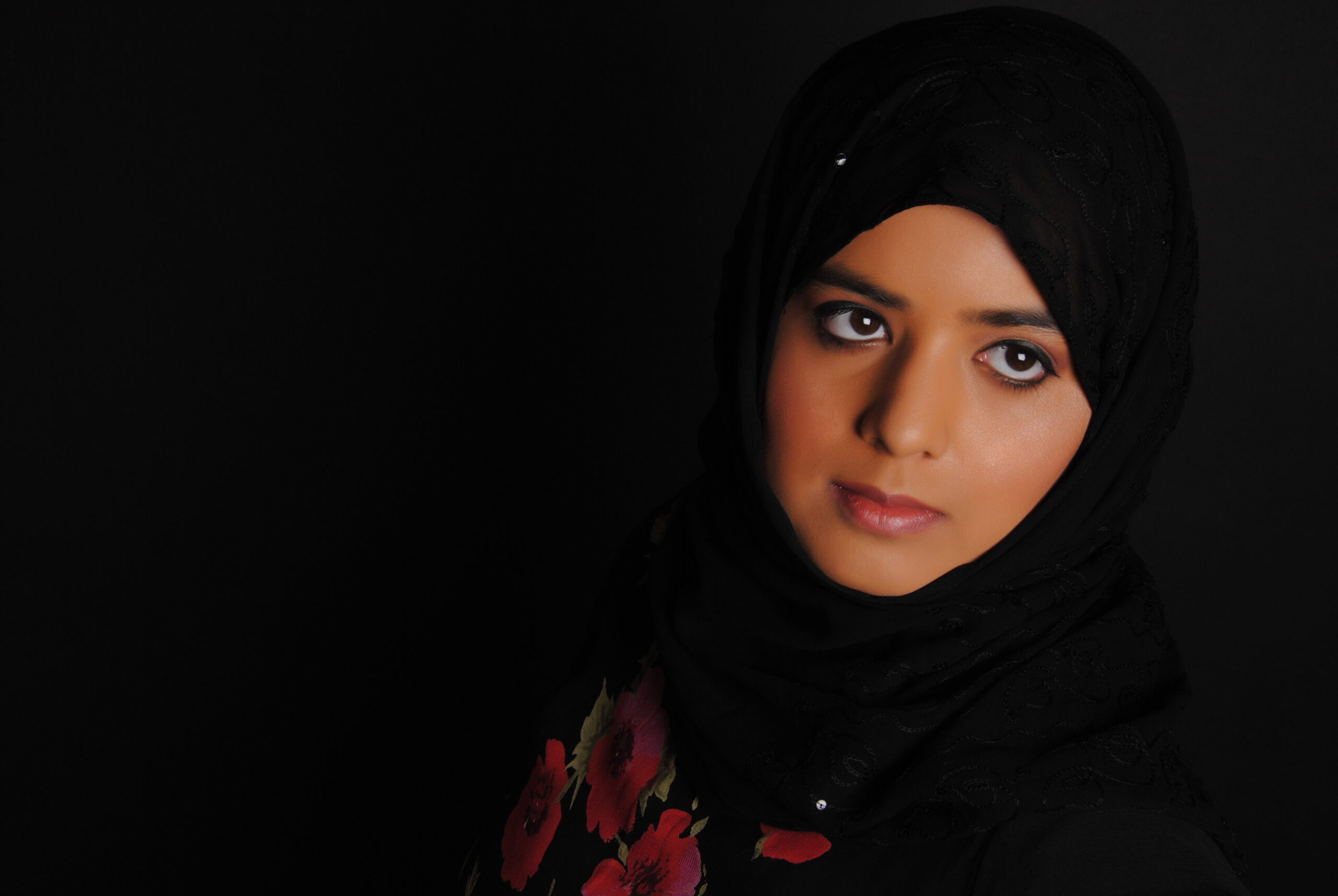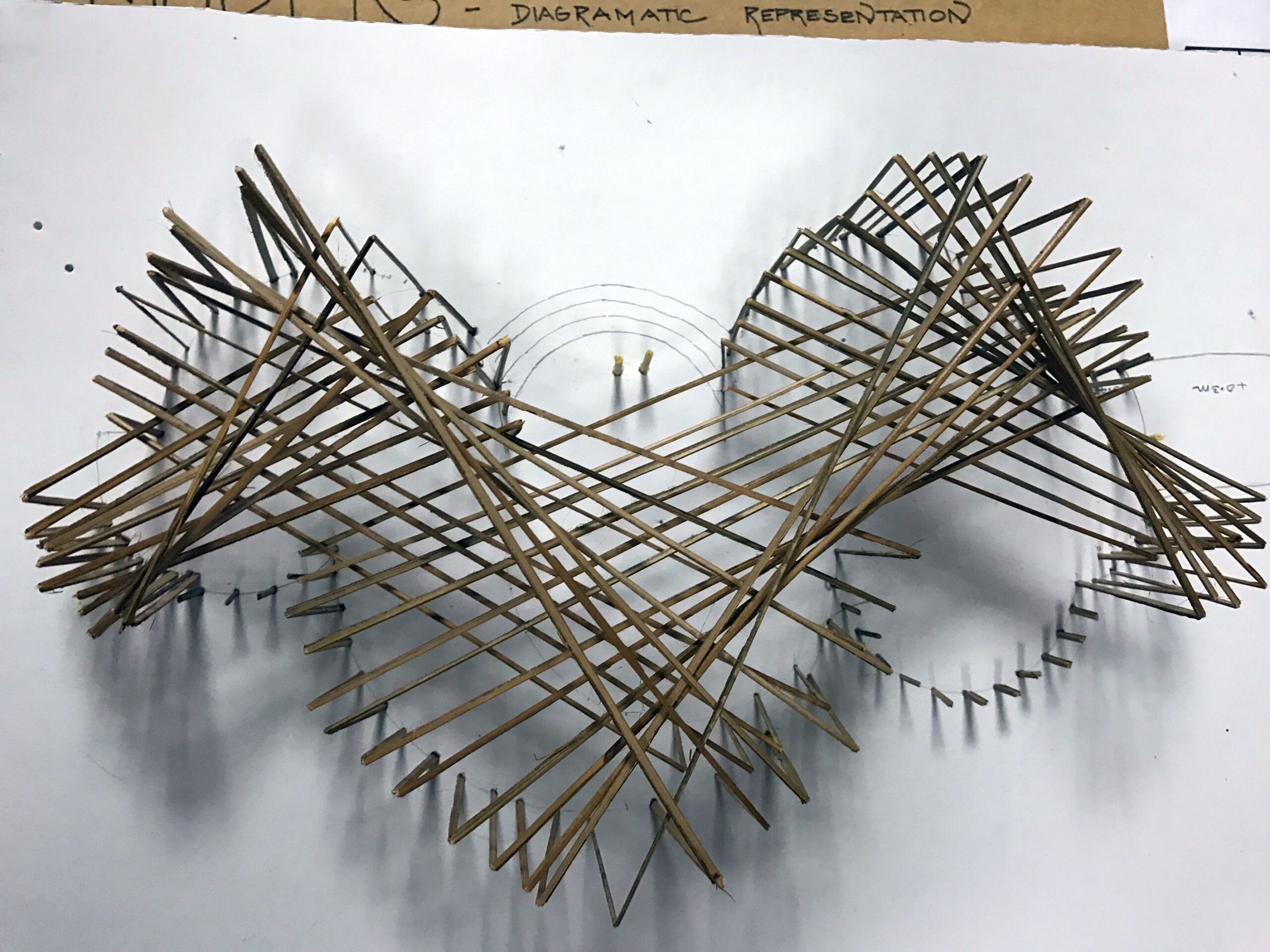Architecture is a creative field. So are graphics, home decor and lifestyle.
In our search to cover young architecture practices from different parts of the country, we came across an unconventional practice, Hyderabad-based DesignAware, and its diverse portfolio. With perpetual curiosity, we reached out to this women-led tech-oriented (ironically, in a city known for its history) practice’s founder and Principal, Takbir Fatima, and discovered a startup-inspired studio invested in self-initiated ‘passion projects’ and client-commissioned work.

Takbir’s story behind the practice’s establishment illustrates everything modern. With offices based in India and Dubai and a line of services ranging from digital craft to wearables to architecture, it is DesignAware’s establishment- beginning with a virtual office, and ‘incubator’ culture that stands out for its contemporary nature.
The Modern Startup Approach
Taking advantage of being from the ‘generation that grew up with the internet’, DesignAware was virtually established in 2012, followed by a physical office in Hyderabad in 2014 and Dubai in 2018.
DesignAware was conceived in London while I was still a student at the AA, founded in Hyderabad, and expanded to Dubai, first as a virtual studio and then as a physical presence.
Takbir Fatima
Takbir completed her M.arch in Architecture + Urbanism from the Design Research Lab, Architectural Association. Her time at AA taught her “the possibility of creating international connections and virtual networks that are location-independent”. This exposure, coupled with an upbringing in the Middle East that involved frequent moving, led to the comfort of working in different contexts and cultures.
At the beginning of this interview, I referred to the establishment of DesignAware as a modern approach. And what could be more modern than startups in our contemporary world? Renouncing the traditional outlook of private practice being a long-term investment that would take decades to get firmly established, Takbir joined a Start-up Leadership Program.
I’m from the first generation to grow up with the Internet through which everyone can share their creative work instead of waiting to be “discovered,” the generation that applies the “move fast and break things” adage, so I turned to the start-up ecosystem to learn about founding a company.
Takbir Fatima
The business-oriented startup approach, though unconventional, doesn’t seem out of place. It is a given that architects are more likely to operate a private practice than work in an organisation. Yet, the management side remains unexplored in architectural education- a dilemma Takbir felt at the time of establishment.
I had no idea where to begin. Though I had the opportunity to learn from inspiring architects and mentors when it came to design, principles and our approach to work, resources and business support within the architectural community were absent.
Takbir Fatima
The Start-up Leadership program laid the foundation for a diverse studio in two different contexts!
Diverse Studio, Diverse Context
Starting an architecture and design studio has been a chicken-and-egg sort of pursuit. In order to get projects, you need an established firm, and to establish the firm, you need projects!
Takbir Fatima
Though envisioned as an architecture firm, DesignAware started as a design studio, venturing into self-initiated projects such as lighting, furniture, wearables, usables, and art. A decade since its establishment, the studio continues to balance these self-initiated passion projects, that allow them to flex their creativity (especially during the technical and execution stages of large projects), with client-commissioned work. With every member involved in these different initiatives, ‘DesignAware becomes an incubator‘.
We are passionate about design, experimenting with the method, material and geometry to arrive at creative solutions to problems and prompts. It was never an intended goal to establish DesignAware as an interdisciplinary design studio. Because we like to design, we design everything, regardless of scale, typology, use or location.
Takbir Fatima
Not tied to a specific scale, typology and location, the studio has physical offices in Hyderabad and Dubai- two different contexts. While Cosmopolitan Dubai harbours a young and diverse community with an almost context-free canvas, Hyderabad provides a specific context originating from centuries-old heritage.
Dubai welcomes radical methods and innovation, while in Hyderabad, innovation is more encouraged in sectors such as tech and medicine. Practising in Hyderabad requires sensitivity to the architectural heritage and the current pressing needs. In Dubai, while respecting its cultural heritage, we also address the diverse cultures residing.
Abeer Fatima, Lead Interior Designer at DesignAware
Despite these differences, Hyderabad and Dubai share the traditionalist approach in common- where preference is given to the tried and tested over experimentation in design. However, DesignAware’s clientele resonates with its ethos, thereby giving them the freedom to experiment- the practice created the theme of the Digital Vernacular by using computational tools and natural material Arish (date palm mid-rib) in Dubai Design Week.
Standing in the Dubai Design District, the WeaveX in Arish is in stark contrast to the Burj Khalifa in its backdrop. In Hyderabad, most of our projects, are located in heritage zones or close proximity to the rocks of the Deccan Plateau. We derive motifs and cues from these contextual markers even when designing contemporary architectural spaces using new materials.
Abeer Fatima
Teaching and Fractals
The practice’s love for experimentation extends to teaching, as observed in their long-term educational program Studio to Site- a hands-on experience for students and young professionals on live sites and the Fractals workshop. Established as a means to generate design awareness, the Fractals workshop is an initiative encouraging questions and exploration. It was created in 2011 after Takbir noticed a disconnect between design and fabrication and a lack of access to digital fabrication tools and equipment in most Indian colleges.


I started the Fractals Workshop because I wanted to create a space where we could experiment with algorithmic thinking, evolution and unpredictability, and how design can be driven by data, nature, material, and geometry. Instead of singular, specific design outcomes, we work towards designing prototypical systems that can create solutions for any given scenario.
Takbir Fatima

In their projects and initiatives, Fractals are a frequent occurrence. The rule-based, self-referential systems have abstractly influenced the ideology and inspired a bottom-up approach.
Different design parameters allow for outcomes greater than the sum of their parts. We find this very exciting, relinquishing control over the urge to imagine an outcome and instead focusing on the parameters that will drive the process. This is a bottom-up method of working, as opposed to a top-down design.
Takbir Fatima
Every project goes through multiple iterations, but the guiding principles outlined at the beginning remain intact- an advice Takbir received from her mentor Ar Syed Anwar Aziz, “Keep the principles constant. Everything else can be variable”.
Socially Responsible
The Practice ensures being socially responsible in every project they undertake, not restricted to specific typologies or communities of users.
It may also refer to how easy, affordable or streamlined it is to source things, to make them and to get them out into the world, to serve the most or those most in need. In this vein, we’re designing a lot of things from scratch.
Takbir Fatima
Working across borders carries forward this approach- in the crowdsourced installation FLOCK in a Dubai street art festival, the units were fabricated in Hyderabad and flown to Dubai, cutting the cost by half. FLOCK, an experiment with public participation and the creation of many minds, evolved into other forms of design research- a design and build workshop in Kollam and as a part of the Directed Research Project at CEPT University.
The 10-year journey
The practice regularly conducts educational sessions and workshops, explores individual passions and operates from two countries. But consider themselves still in the process of establishment.
It didn’t all happen at once, but incrementally (think lean startup!); though the vision was great, the steps we took were small. We don’t see ourselves as established, we are still on a journey.
Takbir Fatima
In this journey of 10 years, they consider their 2022 project- Hilltop School– a charity school built inside the Golconda Fort, to be the most challenging. The project dealt with challenges ranging from a tight budget to heritage restrictions and challenging topography. Completed in January 2022, the practice continues its association with the project in the form of a crowdfunding initiative #MakeProgressPossible, workshops, tours for architecture students, and inputs on curriculum development.
Another project, the ongoing Ribbon House, is DesignAware’s first design and build project under their 2020 launched initiative BuildAware, launched to allow greater control over execution, fabrication, and experiment with ways of making.

Venturing into several fields and handling several initiatives, DesignAware comes across as a confident firm. However, the firm has had its share of failures, unfulfilled desires and learnings.
One very radical project we worked on a couple of years ago, Crescendo, was partially built before the skin design was changed by the contractor. Another project we call Smart Office was abandoned due to building ownership disputes.
Takbir Fatima
While the vision for these projects remained unfulfilled, they contributed to the founding of BuildAware
As architects, it is our job to design and so we need to remind ourselves not to fret when our designs are not built. This is also one of the reasons we founded BuildAware, to realize our designs which others may not be able to.
Takbir Fatima
and became an inflection point
If we were to do it all over again, with the knowledge we have today, we’d probably avoid being hung up on executed projects. Execution is not a validation of good design.
Takbir Fatima
About the Practice
DesignAware is a Hyderabad and Dubai-based firm established in 2012 by Takbir Fatima. It is an experimental architecture and inter-disciplinary design studio borne out of a desire to create awareness through liveable, wearable, usable, accessible and responsible design. The practice is deeply involved with built and natural environments, and with real and virtual worlds via investigative design research across discipline/method/scale/context/interface.













One Response